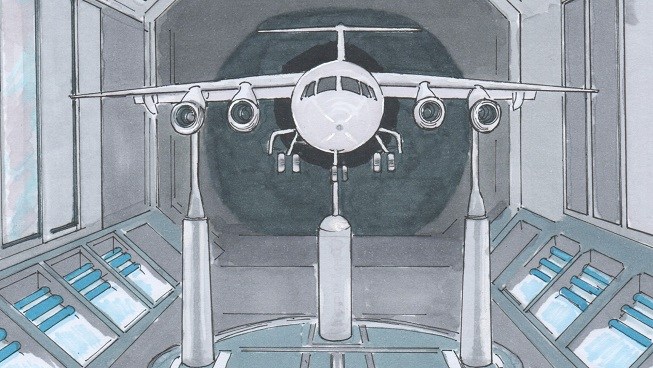What sort of results has the European Commission’s Clean Sky 2 programme shown to date?
Clean Sky, the European Commission’s Joint Undertaking that seeks to reduce CO2, NOx and noise emissions from aircraft, has already produced some game-changing results in the field of aviation. The goal is to push aeronautical science beyond the limits of imagination by creating new technologies that significantly reduce aviation's impact on the planet.
Clean Sky explores several technology streams: engines, systems, large passenger aircraft, fast rotorcraft, airframe, small air transport, regional aircraft and eco-design. Clean Sky firmly believes that there is no silver bullet – the climate-neutral aircraft of the future will incorporate many innovative and eco-friendly technologies. 30 new stories have just been released on Clean Sky’s website where you can discover many fascinating results to date – read them here!
How many research organisations take part in Clean Sky?
So far, 113 research organisations from 21 countries have taken part in Clean Sky’s projects. Their role within Clean Sky’s ecosystem is vital – on top of initiating and developing their own new technical proposals, they act as incubators, taking ideas and concepts that have been developed through academia and transforming them into technologies that have useful applications for industry.
What role do research organisations play and what is their added value as part of Clean Sky?
Research centres often bridge the gap between academic concepts and real-world solutions – and that is why they are an integral part of the Clean Sky Programme. They are skilled at identifying the best routes for technology transfer, opening up conversations around the potential of academic concepts for industrial use and investigating the most promising possibilities.
An additional value of research centres is that they bring expertise and knowledge from other sectors to the fore. A research centre might house experts in laminar flow technologies, or thermoplastics, or 3D printing, which might be used in another context but can be applied to aviation challenges. The automobile sector, for example, often develops technologies which can be modified for use in aviation, and vice versa.
At Clean Sky’s Spring Event in April this year, Professor Anke Kaysser-Pyzalla of DLR outlined this as a key benefit. “We combine our knowledge from aerospace and from other sectors,” she said. “This accelerates our research toward our common goal of sustainable aviation.”
Clean Sky believes firmly in collaboration, and knows that combining the best talent from academia, industry, SMEs and research organisations is a recipe for success. For this reason, the latest edition of Clean Sky’s Skyline magazine is dedicated to the achievements of research organisations – read it here to find out more.
What sort of work is undertaken by research organisations?
Research organisations do not only take part in our projects – they also conduct important studies and evaluate the progress Clean Sky’s has made.
For example, DLR, the German Aerospace Centre, leads the evaluation of Clean Sky’s success as part of the Technology Evaluator framework. Under Clean Sky 2, two assessments will take place – the first has just been completed, and concluded that Clean Sky delivers in line with its objectives. You can read about the results of the First Global Assessment of Clean Sky here.
Clean Sky research organisations recently took part in a study on what the future of aviation would look like, organised by EREA, the Association of European Research Establishments in Aeronautics. This interesting study designed 4 possible scenarios.
“Scenarios make it possible to visualise a future direction and to build a plan of actions,” says Ligeia Paletti of the Royal Netherlands Aerospace Centre.
Great! What about some examples of projects and contributions to demonstrators?
The French Aerospace Lab (ONERA) and the Italian Aerospace Centre (CIRA) are two research organisations that have a long history with Clean Sky. From DRAGON to HIGH-TRIP (ONERA) to SAT-AM and T-WING (CIRA) projects, their innovative work and out-of-the-box thinking has been an inspiration!
FIDAMC, with its focus on lightweight and robust composite materials, fits in perfectly with Clean Sky’s objectives. The use of composite materials will be extremely important in the sustainable aviation fleet of the future – and FIDAMC is helping to make their uptake a success!
The Łukasiewicz Research Network - Institute of Aviation (Łukasiewicz - ILOT) is one of the oldest research facilities in Europe. The strategic research areas of the Institute are aviation, space and unmanned technologies, making them perfect partners for Clean Sky projects.
Together with ROMAERO SA, INCAS, the Romanian National Institute for Aerospace Research "Elie Carafoli", form the Romanian RoRCraft Consortium which is strongly involved in the RACER project. They recently reached an important milestone – the delivery of the central fuselage – and hosted a high-level event to celebrate the occasion in Bucharest.
The Aircraft Research Association (ARA), based in the UK, has worked closely with both Rolls-Royce and Airbus on various Clean Sky projects. Currently, Clean Sky research projects account for 10-15% of ARA’s annual research programme, which shows how important the goals of sustainable aviation have become!
What will the role of research organisations be in the future for Clean Aviation?
The research organisation partners are a critical part of Clean Sky’s success. They are constantly working on the interface between academia and industry, making them experts in transforming knowledge into actionable results. They are a binding force for connectivity and innovation, and with the diverse range of expertise available through them, they regularly come up with groundbreaking new ideas, pushing the boundaries in clean aviation technology.
If you would like to read more about how research organisations can help to drive innovation in sustainable aviation, read the latest edition of Skyline, where you will find out all about the great work being undertaken. Research organisations will help Clean Sky to achieve an ambitious goal – climate-neutral aviation by 2050!
Want to stay informed about Clean Sky? Sign up for our e-newsletter for more!

